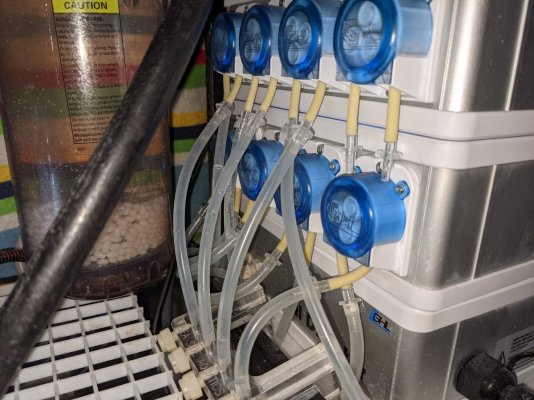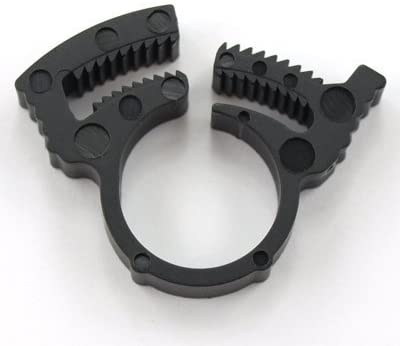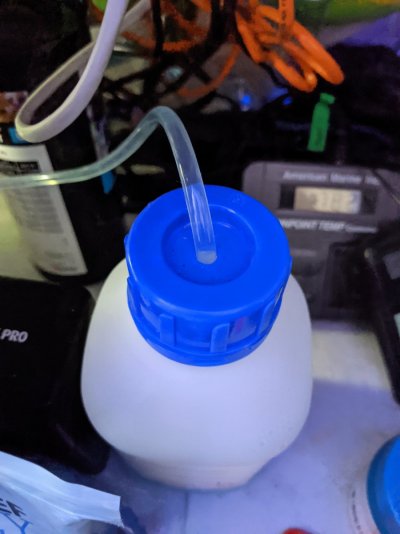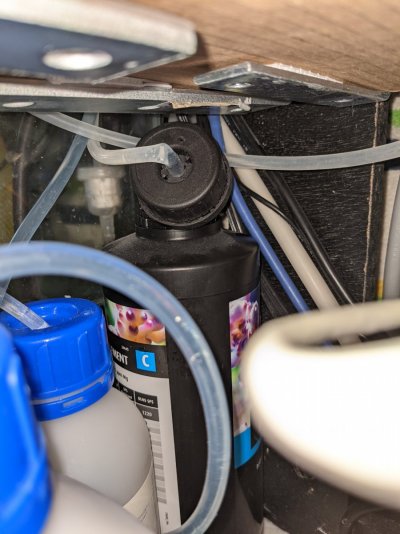My top most doser is back siphoning. From the left doser heads 1 & 2. Where #1 is mag and #2 is calcium. I check #2 very often and I see the liquid inside the tube is visibly decreasing in height within the tube. The output tube is above the water of sump and the inlet tube is submerged in the calcium solution. I've always had this issue and consider the doser heads fully functional and seem to pinch tube tight. Tube is solid piece from doser into calcium solution; I've glued the cal tubing to the GHL tube nozzle adaptor, adapter to doser side not glued, tubing from doser to aquarium not glued.
Calcium is the one driving me crazy because can't keep as stable as I want, causing me extra work with testing and manually dosing. I wish I could compare to the doser below however not so easy because that one is being used for the KH Director, meaning most of those tubes are empty. The top doser head #3 may also back siphon but harder to tell because volume of liquid being dose is much higher, #1 and #2 only dose 1ml per day and back siphon maybe 1 - 2 ml per day.
I am using Red Sea CAL and MAG solution; I'm considering adding RO water into the dosing solution, if dose instead 10 ml a day back siphon of 1 ml per day should be unnoticeable. I was hoping for something better. Any advice out there? Thank you all : - ]

Calcium is the one driving me crazy because can't keep as stable as I want, causing me extra work with testing and manually dosing. I wish I could compare to the doser below however not so easy because that one is being used for the KH Director, meaning most of those tubes are empty. The top doser head #3 may also back siphon but harder to tell because volume of liquid being dose is much higher, #1 and #2 only dose 1ml per day and back siphon maybe 1 - 2 ml per day.
I am using Red Sea CAL and MAG solution; I'm considering adding RO water into the dosing solution, if dose instead 10 ml a day back siphon of 1 ml per day should be unnoticeable. I was hoping for something better. Any advice out there? Thank you all : - ]













